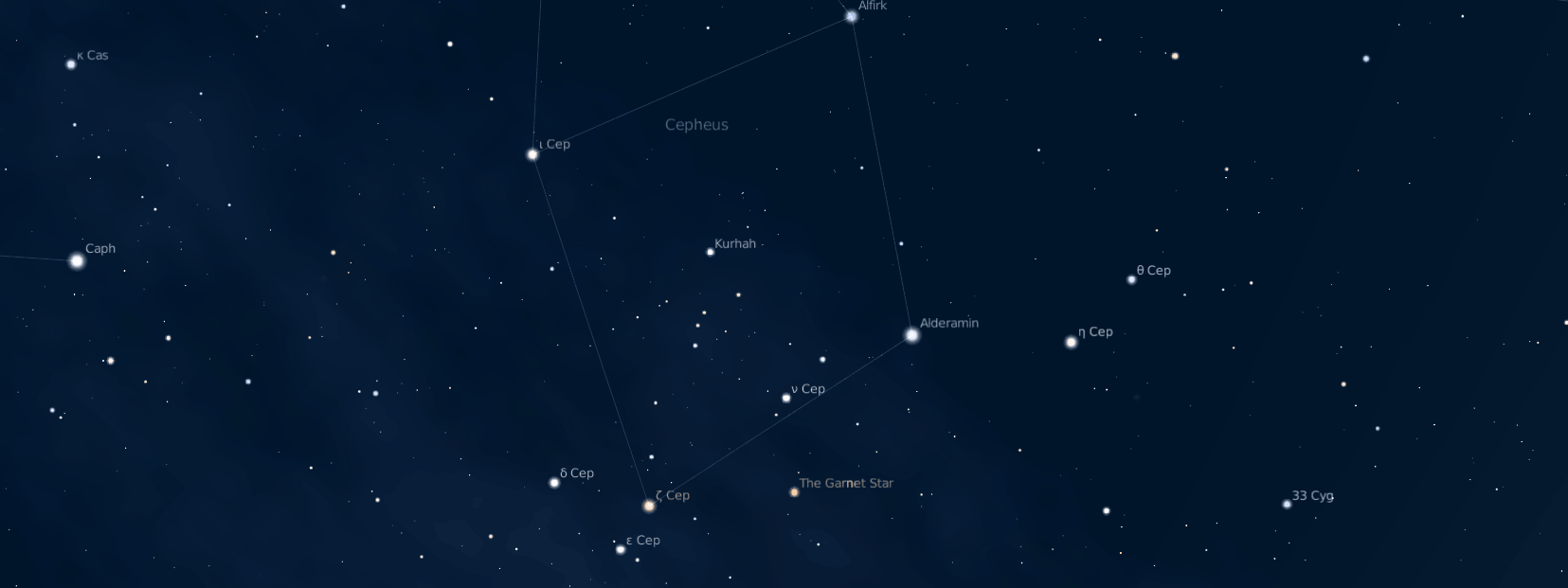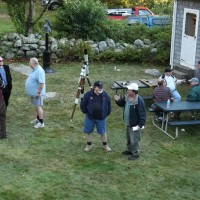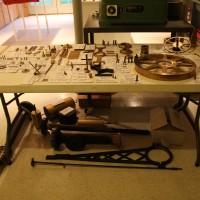October 2010
CAD Modelling the Clark: An Overview of the Telescope’s Mechanical Systems and Personality
Al HallAl started his professional career as a Thin-Films Process Engineer for Electro-Films Inc in Warwick, Rhode Island in 1981. He then moved on to become a Senior. Payload Mechanical Systems Design Engineer for Hughes Space & Communications in El Segundo, California in 1996. Al then became the First Product Design Engineer for Orion Telescopes & Binoculars in Watsonville, CA. Later, Al left Orion Telescopes to work for the Atomic Vapor Laser Isotope Separator Project (AVLIS) at Lawrence Livermore National Laboratory. Al is currently employed as a Senior Opto-Mechanical Systems design engineer for JDS Uniphase in Bloomfield, Connecticut. Al is the current President of the Astronomical Society of Greater Hartford (ASGH) and a keyholding member of Van Vleck Observatory’s 20” Clark Refractor Public Observing Committee at Wesleyan University in Middletown, CT. Al has been a member Skyscrapers for over 30 Years and been building and using telescopes since he was 8 years old. Al was the youngest keyholder of Seagrave Memorial Observatory - at 16 years old. Al is also a two-time award winner at the Riverside Telescope Makers Conference at Big Bear Lake in California and a seven-time award winner at the SpringfieldTelescope Makers Stellafane Convention in Springfield , Vermont. Al was also the co-winner of the 2009 Astronomer of the Year Award at Wesleyan University’s StarConn conference. He loves telescope making, astrophotography, and spending clear, dark nights examining the heavens with my friends.
Dark Skies and Radio Telescopes: A trip to the National Radio Astronomy Observatory
Glenn Jackson
Light and Color in the Universe
Bob BermanGeorge Berkeley, for whom the town and campus were named, said, “The only thing we perceive are our perceptions.” This means that the colors of the cosmos come partially from our own retinal biases. This colorful lecture, which includes demonstrations, examines the universe’s “favorite” color, provides vivid demonstrations of color illusions, and makes clear the four major quirks of human scotopic (low-light) vision upon which all astronomers rely. We’ll also explore light’s amazing oddities (e.g. the day sky is actually not blue but violet, most of the yellow we see is not yellow at all, but solely a mixture of green and red light, etc). While we’re at it, we’ll learn the only way that light is created, what it truly is, and how it delivers the electromagnetic force from distant empires
Bob Berman is currently the most widely read astronomer in the world. His celebrated Strange Universe feature appears monthly in Astronomy magazine, the largest circulation periodical on astronomy, where he is contributing editor.
Berman is also, since 1994, the astronomy editor of The Old Farmers Almanac, and its chief science writer. He has authored more than a thousand published articles, and was Discover Magazine's monthly columnist from 1989 until its sale in 2006.
Bob Berman is author of "Secrets of the Night Sky" (Morrow, 1995; paperback HarperCollins 1997) which was a Main Selection of the Astronomy Book Club and published in Europe by Piper. His other books include "Cosmic Adventure" (Morrow 1999, and Harper, 2000), Strange Universe, (Henry Holt / Times Books, 2005) and translated into four languages, Shooting for the Moon (Lyons Press, 2007) and Biocentrism (2009, with Robert Lanza, MD). Listeners in seven states hear his Skywindow program on Northeast Public Radio stations, during NPR's Weekend Edition. His next book, about the sun, will be published in 2011 by Little, Brown.
For 13 of the past 20 years Berman has run the summer astronomy program at Yellowstone Park for the National Park Service and Yellowstone Institute.
Berman founded the Catskill Astronomical Society in 1976, and is director of Overlook Observatory, near Woodstock, New York, and the Storm King Observatory at Cornwall, New York.
He has been seen nationally on numerous TV shows, including guest appearances on CBS This Morning, the Today show, and Late Night with David Letterman.
Bob has led a dozen aurora and eclipse expeditions which have taken him from the Arctic to the Antarctic.
Berman was Adjunct Professor of Astronomy and Physics at Marymount college from 1995-2000, and continues to deliver special government and academic programs at venues ranging from the National Park Service to the UN School in New York to the Nature Conservancy, to NIST (National Institute of Science and Technology), and for amateur and professional astronomy organizations.
Best Targets For Autumn Astrophotography
Ruben KierRuben Kier’s lecture will focus on the choice of celestial objects for astrophotography, especially objects situated for imaging during the months of October and November. In choosing targets for imaging, amateur astrophotographers should seek out compositions that inspire the viewer. For most amateurs, the object should be bright enough to image with an average CCD camera through a backyard telescope during a single evening. The target needs to be large enough to show detail, and high enough in the sky to be captured from northern latitudes. Choosing the right target for the season, sky conditions, and equipment keeps the process of imaging a pleasure. After all, a hobby should be fun!
Ruben Kier's photos, articles, and letters have appeared in Astronomy, Sky & Telescope, and AstroPhoto Insight magazines. He has recently joined the Astronomical Advisory Council of the University of Florida. This year, Ruben summarized a decade of experience with CCD imaging in his new book, The 100 Best Astrophotography Targets: A Monthly Guide for CCD Imaging with Amateur Telescopes. His goal has been to show how amateur astronomers, using moderately priced equipment, can obtain excellent images rivaling those obtained with the most costly telescopes. More of Ruben’s images are available on his website, www.stardoctor.org.
Related Links
Protecting the Outer Space Environment
Robert BachelderOrbital space must be protected because it is a valuable natural resource, serving as home to satellites that are essential to communications, weather forecasting, Earth observation, and other activities. However, orbital space is becoming congested with debris, the results of the expanded utilization of space for scientific, commercial, and military purposes. The 2009 collision of a functioning U.S. satellite with a defunct Russian spacecraft underscores the importance of timely action to mitigate and remove debris from key orbits. It is time for humanity to enlarge its environmental perspective to encompass outer space as well as Earth.
Rev. Robert Bachelder is Minister and President of the Worcester Area Mission Society (WAMS), an arm of the United Church of Christ, and director of its Goddard Project. Seeking to promote citizen action to protect orbital space as an essential natural resource, the project has partnered with the Union of Concerned Scientists to create the Goddard Visitor Program and maintains a dedicated website at www.protectouterspace.com. Bachelder is the author of “Shared Space: The Ethics of Satellite Use,” the first analysis of U.S. space policy to appear in a major theological journal.
Measuring the Expansion of the Universe from the Backyard!
Todd KozikowskiTopics of Todd's talk will cover: Anatomy of a supernova and why we search for them; Selecting target galaxies based on distance, morphology, luminosity, size, and inclination; Robotic telescope setup; Demonstration of software used; Data post-processing; and reporting a discovery.
Todd Kozikowski, has been an amateur astronomer since his first visit to Seagrave Observatory at the age of six. He has devoted nearly three decades to the advancement of public knowledge and appreciation of astronomy. He continues to pursue this passion through his private research and outreach programs at his Wilson Hill Observatory (WHO) and as a former director of the Ladd Planetarium and Stephens Observatory at Bates College.
Todd is known for his innovative instrumentation and computerized integration of telescopes for advanced use by both amateur and professional observers. Todd has been devoted to the exploration of supernovae, faint comets, NEOs and exoplanets through his computerized WHO Sky Patrol for near-real-time automated searches, data recording and acquisition of hundreds of objects nightly.
He received his B.S. in Physics from Bates College with additional studies at the Harvard Smithsonian Center for Astrophysics with multiple research projects involving the Multiple Mirror Telescope and the Whipple Observatory at Mt. Hopkins. Todd resides with his wife Laura and two daughters in New Hampshire.
The Sesquicentennial Birthday of Frank Evans Seagrave
Dave HuestisDave Huestis, a Skyscrapers member since 1975 and the society’s historian for many years, will be presenting a talk to commemorate the sesquicentennial birthday of Frank Evans Seagrave (1860-1934).
Skyscrapers purchased Frank’s observatory and 8¼-inch Alvan Clark refractor on Peeptoad Road back in 1936. Dave will reveal some important facts that he has uncovered from his continued research into Frank Seagrave’s life and achievements. He has recently received additional donated Seagrave materials. So for those of you who already heard Dave’s April presentation, he promises to “reveal” a great find at the conclusion of his talk.

Delta (δ) and Mu (μ) Cephei
: By Glenn ChapleNeptune: The Blue World
: By Craig CortisOctober Meteor Showers
: By Dave HuestisSky Notes: October 2010
: By Francine Jackson
AstroAssembly 2010




